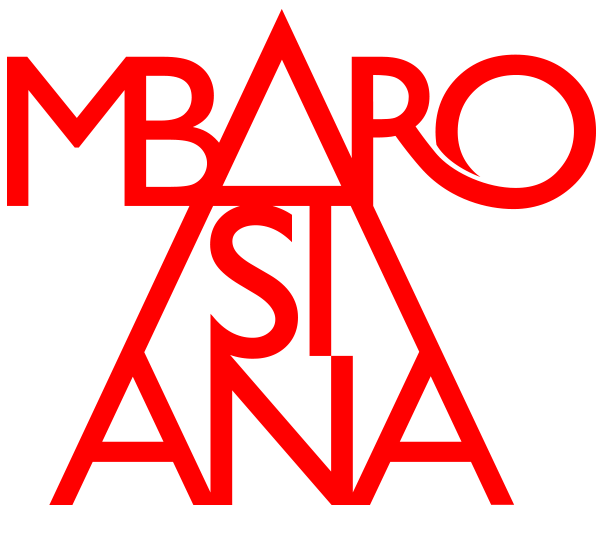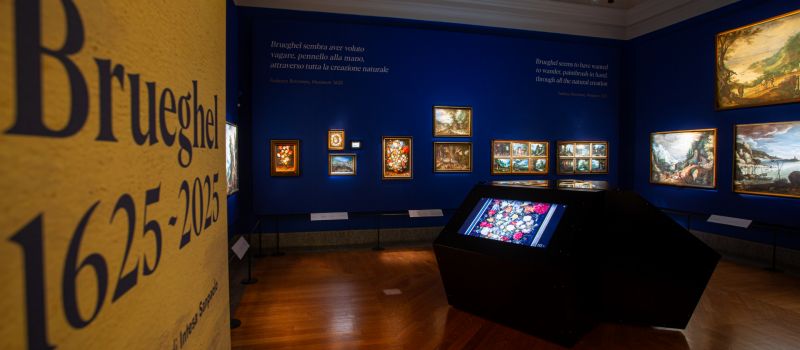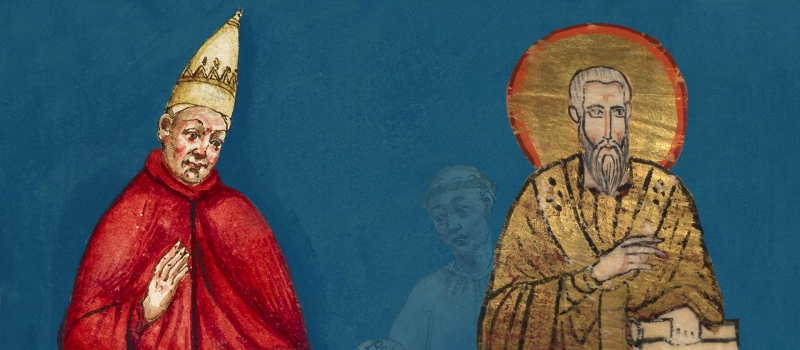Cardinal Federico gave the Library to a multicultural character, oriented towards dialogue, writing as he did that even books from cultures and faiths other than Christianity can “bring us many benefits and make us knowledgeable about many things that are both beautiful and very beneficial”.
The particular richness of the texts dealing with philosophy, Christian theology and other religions (above all Islam and Judaism), as well as a wide range of ancient and modern literature makes the Ambrosiana a veritable treasure chest in which one can search for Truth, which has always charmed the human soul, in all regions and at all times.
LIBRARY RULES
Founded by Cardinal Federico Borromeo and inaugurated in 1609, the Veneranda Biblioteca Ambrosiana is administered by the College of Fellows (Collegio dei Dottori), presided over by the Prefect.
The ordinary administration of the services is coordinated by the Head Librarian, who reports to the Director of the Library.
Assistance to scholars in the Reading Room is guaranteed by the library staff, as far as they are competent, and by the presence of a Fellow with the title of Head Librarian.
Notice to Thesis Supervisors, PhD candidates and graduates working on theses:
Thesis Supervisors, PhD candidates and graduates working on theses are requested to contact the Library Administration (e-mail: [email protected]), before assigning research topics that entail consultation of the materials in the reserve collections, subject to Special Rules for the consultation of manuscripts and incunabula (see Library Rules, Art. 4, §3).
This precaution is necessary because of the state of some materials, which precludes consultation. For information concerning the materials that can be consulted, see the relevant page.
ART. 1 – OPENING TIMES
§ 1. CLICK HERE FOR UPDATED OPENING HOURS AND ACCESS PROCEDURES
§2. It is closed: on public holidays; on the feast of St. Ambrose, patron saint of Milan (December 7); from 24 December to 6 January; from Thursday in Easter Week to the Sunday after Easter; during the summer holidays (as scheduled from year to year) and on other days shown on the calendar.
ART 2. – ADMISSIONS
§1. Access to the Library, after authorization and registration, is open to anyone 18 and older. Users are requested to wear attire suitable to the decorum of the institution.
§2. Access is subject to authorization by the Head Librarian, who will assess the applicant’s need to consult the Library holdings. Where necessary, a letter of presentation will be required.
§3. On entering and leaving the Library, users must fill in the register.
§4. On entry to the Reading Room, users must show their pass to library staff.
§5.The membership pass lasts one year and is of two types: ordinary (for consulting printed matter from 1901 only) and special (for all other printed materials and manuscripts).
ART. 3 – CONSULTATION
§ 1.Pass holders are allowed direct access the printed materials in the Reading Room. Those who have to use the steps to reach books, should apply to the library staff. After consultation, volumes must be left on the tables, without replacing them on the shelves.
§2. Applications to consult other printed matter, incunabula, manuscripts and archival documents should be made to the library staff using the forms in the Reading Room.
§3. Each user may submit a maximum of four requests daily.
§4.The staff distribute the material requested from 9 a.m. to 12 noon and from 2 p.m. to 4 p.m. The material must be returned by 4.45 p.m. All users must leave the reading room by 4.50 p.m.
§5.Those who wish to continue to consult the material on the following day, should tell the library staff. If the applicant fails to appear the following day, the material will be put away and a new application should be made.
ART. 4 – MANUSCRIPTS AND RARE BOOKS
§1. When material of this type is provided for consultation, the library staff will request the user’s ID, to be held until the material is returned.
§2. If the material being consulted is a manuscript or other fragile or valuable document, the use of white cotton gloves is required, which can be purchased at the library distribution counter.
§3. Some printed matter, incunabula, manuscripts and archival documents are available with reserve. The scholar who wishes to consult such material must submit a written application to the Library administration in justification.
§4. To consult drawings a reservation is required: this can be made by e-mail at [email protected] .
ART. 5 – MATERIALS PERMITTED IN THE READING ROOM
§1. Users may not enter the Reading Room with overcoats, cloaks, bags of any kind, umbrellas, beverages, foodstuffs or any other objects not necessary for reading. Only paper and writing materials are allowed.
§2. Complete silence must be observed in the Reading Room.
§3. Users may bring and use laptops.
§4. Mobile phones must be in silent mode and must not be left on the work desks. It is strictly prohibited to make or answer phone calls or use any other audio function.
§5. For the use of other instruments (Wood lamp, microfilm/microfiche reader, etc.) please contact library staff.
ART. 6 – REPRODUCTIONS
§1. It is forbidden to use one’s own equipment to take photos of printed works, incunabula, manuscripts, drawings or any other kind of material being consulted.
§ 2. Applications for reproductions must be submitted online by filling the image request form (click here)
§3. Photocopying of manuscript and printed material prior to 1950 is prohibited. For photocopies of printed material after 1950, please contact the staff.
§ 4. The Library Administration has the right to prohibit reproduction in any form of any material that might be damaged in the reproduction process.
ART. 7 – STUDIES OF MATERIALS IN THE LIBRARY
§1. Normally, scholars present the Library with publications concerning the materials studied. Except for cases agreed on with the Administration, the consultation of degree theses delivered to the library is understood to be allowed.
ART. 8 – SINGLE DISCIPLINARY RULE
The Veneranda Biblioteca Ambrosiana may suspend or prevent the renewal of the registration pass of any persons who, by their behaviour, have damaged the library material or caused a disturbance to the normal functioning of the Library itself.
INFO UTILI
VENERANDA BIBLIOTECA AMBROSIANA
Piazza Pio XI, 2
20123 MILAN
ITALY
Tel. +39 0280692.1
[email protected]
FOR IMAGES REPRODUCTION REQUESTS, PLEASE FILL IN THE FORM ON THIS PAGE
BIBLIOTECA HOURS
Monday to Friday from 9.00 to 16.50
For printed books and manuscripts, reservation with at least two working days’ notice is highly recommended. The reservation must be addressed to: [email protected]
Reservation, in the same way as above, is mandatory for drawings, engravings, parchments and materials from archival funds.
Following the current unusability of part of the rooms used for book storage, some shelf marks may be unavailable.
The distribution of material that has not been booked will be limited to the time slot between 9.00 and 12.00.
Due to reasons of force majeure, the Library may be forced to reduce its service, up to and including the temporary closure.
MATERIALS EXCLUDED FROM CONSULTATION
PLEASE ALWAYS CHECK THIS PAGE FOR THE UPDATED LIST OF CLOSING DAYS FOR FESTIVITIES AND HOLIDAYS






































































































































































